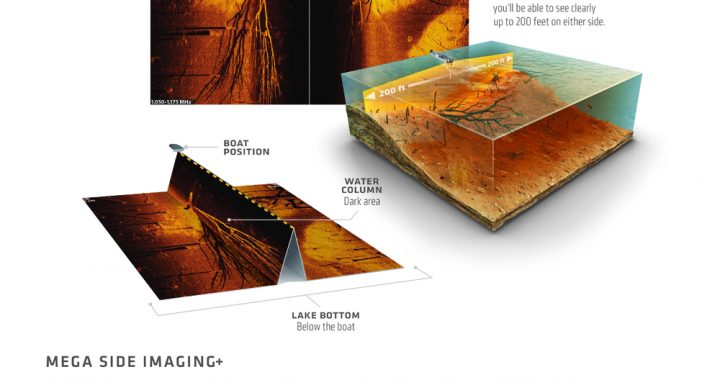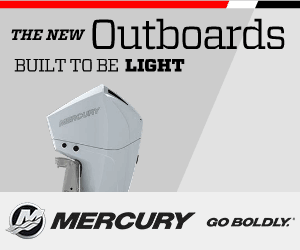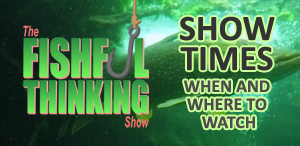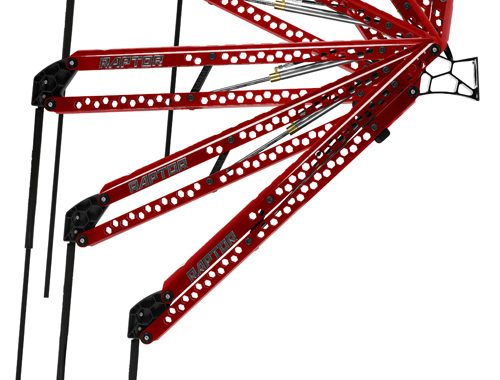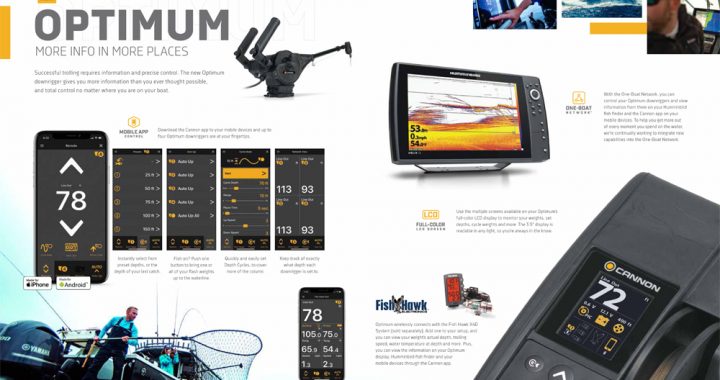Author Archives: davebush
Video Tip – Match Up the Correct Rod and Reel
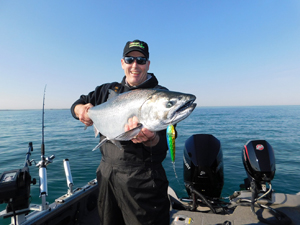

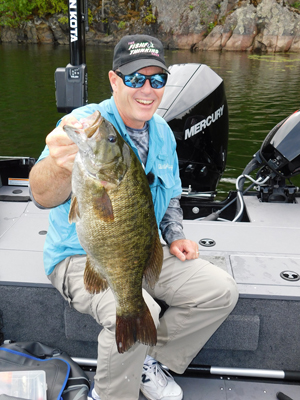
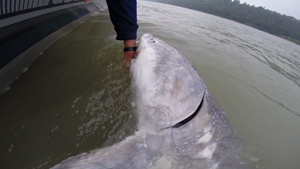

Video Tip – Treat Windows for Better Visibility





Video Tip – Easy Rod Tip Repair





Downriggers for Bottom Fishing – Sand and Muddy Bottoms
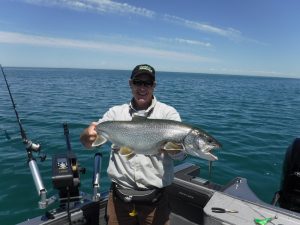 Without a doubt, downriggers are the best way to present a lure or bait in deep water. Most anglers associate downriggers with suspended fish, and target fish holding at specific depths and preferred temperatures, but don‘t neglect the fish holding structure at the bottom. While it is true that fishing close to the snag infested bottom can pose many threats to a passing cannonball or lure, these areas often hold loads of undisturbed lunkers. Salmon, Trout, Walleye, Muskies or whatever deep-water species you target, there is always a time to fish close to the structure on the bottom, and trolling with a downrigger is the best way to cover the water and find your active fish.
Without a doubt, downriggers are the best way to present a lure or bait in deep water. Most anglers associate downriggers with suspended fish, and target fish holding at specific depths and preferred temperatures, but don‘t neglect the fish holding structure at the bottom. While it is true that fishing close to the snag infested bottom can pose many threats to a passing cannonball or lure, these areas often hold loads of undisturbed lunkers. Salmon, Trout, Walleye, Muskies or whatever deep-water species you target, there is always a time to fish close to the structure on the bottom, and trolling with a downrigger is the best way to cover the water and find your active fish.
If you are lucky enough to be fishing an area with only limited snags and obstructions, one of the best ways to attract attention and also turn on inactive fish, is to drag your downrigger weight across the bottom. With a mostly sand or muddy bottom, anytime the bottom is disturbed, this kicks up a trail of debris, just like feeding fish would, or escaping prey and turns on the fish and into an aggressive feeding pattern. Even totally inactive fish can be persuaded to take a whack at the lure. Walleye, Smallmouth Bass, Lake Trout and Salmon all fall victim with this very effective technique. It helps greatly to add a downrigger trolling snubber, this 12-inch-long piece of shock absorbing material is clipped on between the downrigger weight and the end of the downrigger cable. It is a small addition, but helps incredibly to keep your weights from snagging as this helps to flex and bounce you across the bottom. It is also essential to use the standard round cannonball shaped weights for this technique, save the unique fish shaped and other weights for suspended fish.
A crawling worm harness 50 feet behind the dragging weight, just as the clouds of silt from bottom contact start to thin out is deadly for Walleye. Smallmouth Bass are much more aggressive and will dive straight into the debris line, often looking for tidbits even 5 feet behind the cannonball looking for a confused Crayfish. An assortment of floating crank baits and minnow imitations all work, as do plastic tubes simply dragged behind as close as 5 feet to up to 25 feet. With the slower boat speeds used for worm harness and tubes, as well as using these techniques in shallower waters, downrigger weights can be decreased. As long as bottom contact is still made, and lures are working correctly, all systems are a go!!
For Salmon and Lake Trout, dragging the bottom is more of an inactive approach to get these monsters up and feeding. The bottom dragging still gets them moving, but it is a much more subtle hit and lure presentation. Boat speeds are usually kept to between 1.5 and 1.7 mph, and a close eye to any changes in the bottom tapping rhythm can indicate a hit. Lake Trout are eager takers to the presentation directly in the debris line and close to the bottom with gang trolls and a small spoons or offerings only 24 inches behind the last spinning blade. Salmon are attracted to the debris, but prefer a presentation above and back from the disturbance.
For the Salmon, buoyant lures with great action at a slower speed are best for this. It allows the baits to hover up and away from the bottom and up into the oncoming curious Salmon. Lures are usually run back 20 to 50 feet depending on the activity level of the Salmon. Precision line counter reels like the Daiwa Saltist and Sealine make it very easy and accurate to repeat the successful amount of line out each time. Avoid trolling at speeds that will make the lures dive, you want to keep it wobbling enticingly and still floating up from the bottom. Find the magic speed and hold on!!
As always, play with lure colours, depending on light penetration and thickness of the clouds of debris kicked up, it can be very important. Remember, hits will not usually be the slam from a Salmon that you maybe use to. At these slower speeds and with the fish generally inactive, hits usually start as only a light bump and slight pull. Do not wait for the release to pop, you will miss many fish. As soon as a hit is noticed, (and it might only be a slight “tick”) it might be necessary to reel down, release and set the hook yourself. It is very common for these Salmon to only mouth the baits, for this reason, keep hooks as sharp as possible to help hook sets and extend your precious few seconds to detect a hit. I change all my hooks to the sticky sharp Mustad Ultra Points for this reason.
The Lake Trout are a different story, and will stick their noses directly in the debris line. The flash of a gang or lake troll (3 or 4 large spinner blades) with a small wobbling lure or bait following does an incredible job. Baits rigged only 2 feet behind the last spinning blade, are just the kicked up little snacks the Lakers are looking for. Small crankbaits and small spoons are idea, but everyday is different. Some days only 10 feet behind the dragging downrigger weight is the magic ticket, other days, up to 30 feet. When two rods are used, I like to stagger the distances, with one close to the ball the other back at least 20 feet and let the fish tell you what they want. Many days, the first acts like an attractor with the second getting regularly slammed!! Pay attention to the successful distance of lead so you can repeat again with your line counter reel. Being dragged in the debris line does cause some abuse to the tackle, so using the highly abrasion resistant Seaguar Fluorocarbon not only gives a nearly invisible presentation, but the Fluorocarbon leader material is extremely tough. Seaguar is not only very abrasion resistant, but almost invisible to the fish, so a much stealthier approach. While Seaguar Fluorocarbon and Mono look very much alike out of the water, in the water it is 2 different views. Seaguar Fluorocarbon almost has the same refraction level as water itself, so in the water it is next to invisible.
When I talk about dragging the bottom, I do mean dragging. It is not uncommon to be fishing in 80 feet of water with 100 feet on the downrigger counter, just make sure your downrigger tension knob is set properly to slip if a snag occurs, its not a good situation to see what breaks first with 250 lb wire cable. Have cutters handy just in case of a mishap.





Downriggers for Bottom Fishing – Snaggy Bottoms
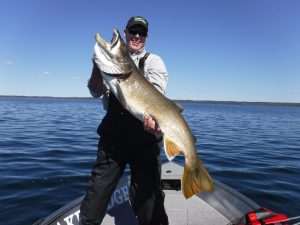 In areas where the bottom is littered with snag filled rocks and debris, all is not lost. It only takes a few snags with the lures or downrigger weight to send even the most dedicated angler looking for new waters, but let me tell you, these areas are not only loaded with fish, but no fishing pressure at all. One technique I have been using for several years has caught me fish when no one else dared to go near areas, and yes, still with my trusty Cannon downriggers.First let me describe a situation. The snag filled bottom is in 80 feet, and of course, I do not want to snag my downrigger weights either, but I will still use my downrigger to take my set up most of the way, down to the 60-foot level, safe and away from all snags and sudden bottom changes in depths should there be a sudden change that catches the driver off guard. My set up consists of a floating Jet Diver or TripZdiver, that is rigged on a 3 – 4-foot dropper line of 40 lb test Seaguar leader material, from a three-way swivel, with my lure trailing 8 feet behind. I use this set up to take the lure the additional 20 feet to the bottom, and bounce across the bottom with my lure swimming a few feet above the snags (do not use a diving lure), spoons like the Northern Kings are perfect for this, great action and lots of flash. The Jet Diver ticks along the bottom, and rigged on the dropper line, has an amazing ability to bounce across snags. Depending on the resistance of the lures used and trolling speeds, expect a lead of about 50 feet from the ball to make up the 20 feet to the bottom.Even though I love using no-stretch line as often as possible, this is one situation where the stretch from a premium fluorocarbon line, like Seaguar Abrazx is a must. Not only is Abrazx highly abrasion resistant, the but the slight stretch helps it bounce along the snaggy bottom and out of most snags. When a snag happens, and they will, the Seaguar line simply pulls from the release clip, and with the tension gone, the now floating diver floats up and away from the snag, and also floats the spoon or lure up and away from resting in the bottom filled with other snags!!! Reel in and set up again without any lost tackle. This set up does work wonderfully well, just make sure you have only just enough line out to contact and tick along bottom. Excessive amounts of line will only cause you to re-set more than you need to, and waste fishing time in productive waters. This is another reason to use a line counter reel. Downriggers simply can not be beat when it comes to fishing deep, but don’t think that bottom fishing is restricted to jigs. With a different mind set, your downriggers can be every bit as successful on deep water structure, as you have come to rely on them for suspended fish.
In areas where the bottom is littered with snag filled rocks and debris, all is not lost. It only takes a few snags with the lures or downrigger weight to send even the most dedicated angler looking for new waters, but let me tell you, these areas are not only loaded with fish, but no fishing pressure at all. One technique I have been using for several years has caught me fish when no one else dared to go near areas, and yes, still with my trusty Cannon downriggers.First let me describe a situation. The snag filled bottom is in 80 feet, and of course, I do not want to snag my downrigger weights either, but I will still use my downrigger to take my set up most of the way, down to the 60-foot level, safe and away from all snags and sudden bottom changes in depths should there be a sudden change that catches the driver off guard. My set up consists of a floating Jet Diver or TripZdiver, that is rigged on a 3 – 4-foot dropper line of 40 lb test Seaguar leader material, from a three-way swivel, with my lure trailing 8 feet behind. I use this set up to take the lure the additional 20 feet to the bottom, and bounce across the bottom with my lure swimming a few feet above the snags (do not use a diving lure), spoons like the Northern Kings are perfect for this, great action and lots of flash. The Jet Diver ticks along the bottom, and rigged on the dropper line, has an amazing ability to bounce across snags. Depending on the resistance of the lures used and trolling speeds, expect a lead of about 50 feet from the ball to make up the 20 feet to the bottom.Even though I love using no-stretch line as often as possible, this is one situation where the stretch from a premium fluorocarbon line, like Seaguar Abrazx is a must. Not only is Abrazx highly abrasion resistant, the but the slight stretch helps it bounce along the snaggy bottom and out of most snags. When a snag happens, and they will, the Seaguar line simply pulls from the release clip, and with the tension gone, the now floating diver floats up and away from the snag, and also floats the spoon or lure up and away from resting in the bottom filled with other snags!!! Reel in and set up again without any lost tackle. This set up does work wonderfully well, just make sure you have only just enough line out to contact and tick along bottom. Excessive amounts of line will only cause you to re-set more than you need to, and waste fishing time in productive waters. This is another reason to use a line counter reel. Downriggers simply can not be beat when it comes to fishing deep, but don’t think that bottom fishing is restricted to jigs. With a different mind set, your downriggers can be every bit as successful on deep water structure, as you have come to rely on them for suspended fish.





Humminbird Side/Down Imaging
MEGA Imaging® takes fish finding into the megahertz range for more detail and domination. Pioneered by Humminbird®, the clarity of MEGA Imaging can help you easily distinguish fish from structure, see the direction fish are facing and even target individual species.
Select MEGA Side Imaging® for an incredible view to both sides of your boat. Delivering up to 3X the output of standard Side Imaging®, MEGA Side Imaging technology took fish finding into the megahertz frequency for the very first time. And with MEGA Side Imaging+™, there’s absolutely no place left to hide, thanks to extended range out to 200 feet on either side, plus 20% more detail than MEGA Side Imaging
Count on MEGA Down Imaging® for a crystal-clear picture below your boat. With up to 3X the output of standard Down Imaging®, MEGA Down Imaging shows you what lies beneath in crystal-clear detail. And with MEGA Down Imaging+™, fish don’t stand a chance, thanks to extended depth down to 200 feet, plus 20% more clarity than MEGA Down Imaging.
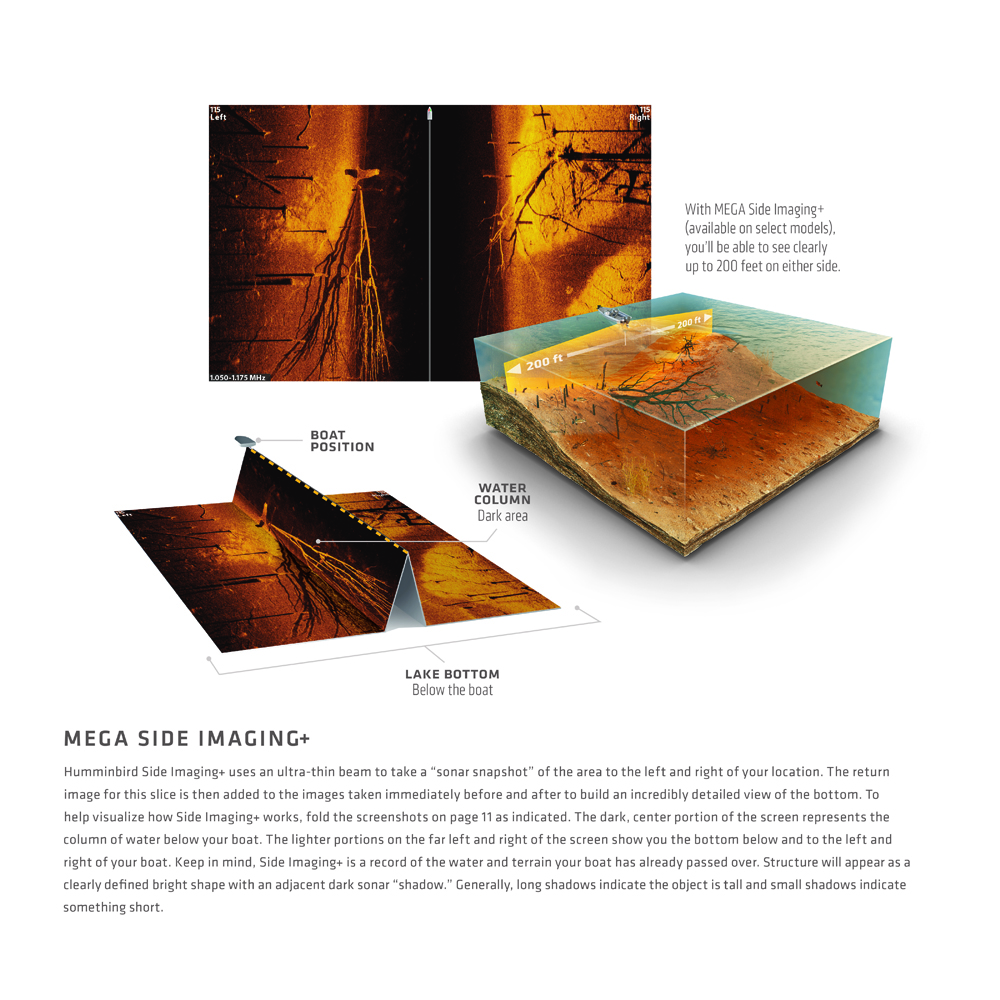
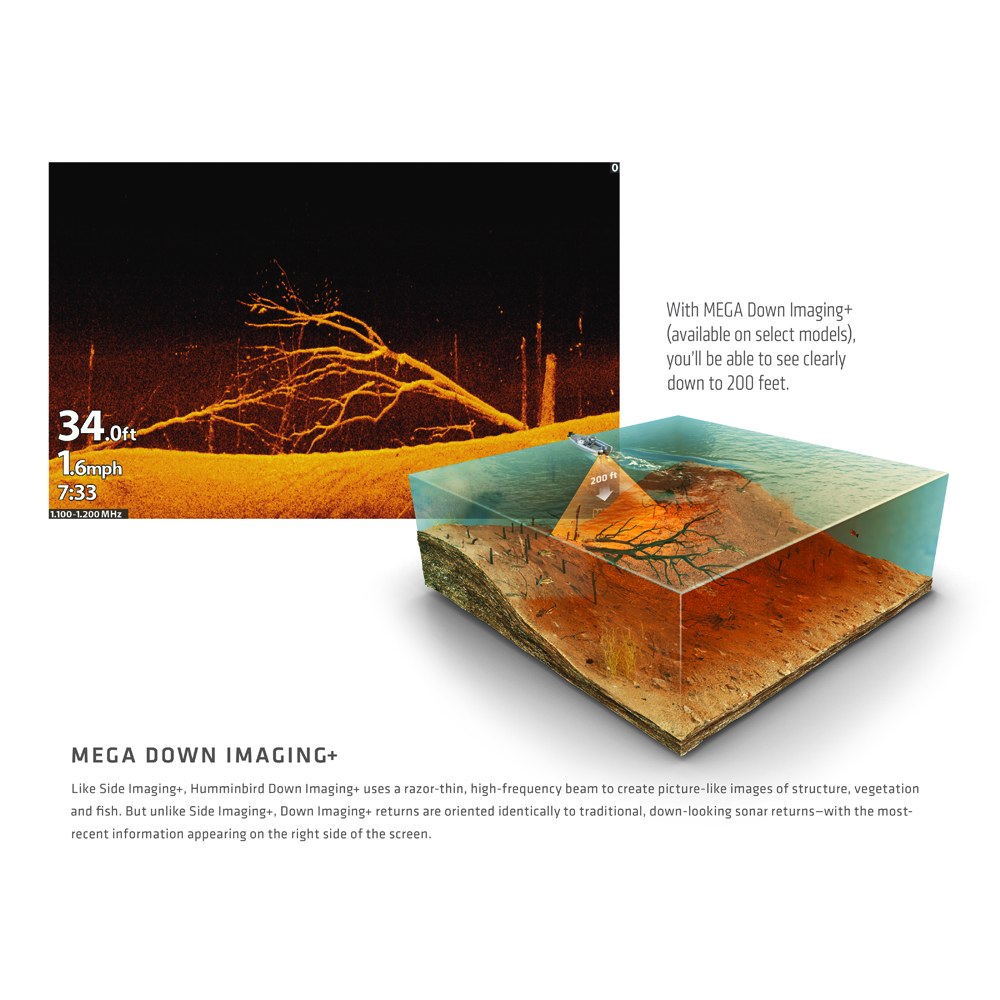
About Charlie Wray
![]() Charlie Wray has been host of the very popular TV show, Fishful Thinking, since 1990. Part of the success behind the show has been the very informative format. Perfect for both the novice and experienced angler, Fishful Thinking provides entertaining insight for all audiences...read more
Charlie Wray has been host of the very popular TV show, Fishful Thinking, since 1990. Part of the success behind the show has been the very informative format. Perfect for both the novice and experienced angler, Fishful Thinking provides entertaining insight for all audiences...read more

Minn Kota RAPTOR
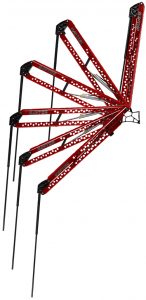 Raptor is an all-new kind of shallow water anchor that knows where you're anchoring, what's happening to your boat, and what to do next. With smart features and a hard-working design, Raptor keeps you locked down. Raptor senses when wind and waves pick up and start to threaten your hold. Then it automatically anchors itself back, and you don't have to lift a finger.
Raptor is an all-new kind of shallow water anchor that knows where you're anchoring, what's happening to your boat, and what to do next. With smart features and a hard-working design, Raptor keeps you locked down. Raptor senses when wind and waves pick up and start to threaten your hold. Then it automatically anchors itself back, and you don't have to lift a finger. 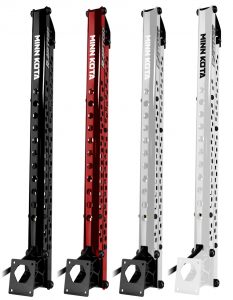
Whether you're anchoring into rocks, mud, silt, sand or anything else - Raptor automatically senses the bottom to apply the right hold, with Auto-Bottom Mode. It's just one of four User-Selectable Anchoring Modes on Raptor. You can also activate Soft Bottom Mode for mud and silt, Rough Water Mode in wind and heavy chop, or Standard Mode for normal conditions.
About Charlie Wray
![]() Charlie Wray has been host of the very popular TV show, Fishful Thinking, since 1990. Part of the success behind the show has been the very informative format. Perfect for both the novice and experienced angler, Fishful Thinking provides entertaining insight for all audiences...read more
Charlie Wray has been host of the very popular TV show, Fishful Thinking, since 1990. Part of the success behind the show has been the very informative format. Perfect for both the novice and experienced angler, Fishful Thinking provides entertaining insight for all audiences...read more

Cannon Optimum
If you want to put bait on target, you’ve got to fish smarter. The Optimum™ downrigger is positively ingenious. This smart, connected system gives you access to critical trolling data and lets you raise, lower and cycle weights using the full-color LCD display, your Humminbird® fish finder, or even your mobile device. No matter where you are on the boat, you’re in charge. And the fish won’t know what hit them. Every Optimum downrigger has a full-color 3.5” LCD display which gives you all of the trolling data from the downrigger right at your fingertips. Wirelessly network your Optimum downrigger with your Humminbird® fish finder to see all of your trolling data right from your Humminbird unit, so you never miss a thing. See where the fish are, know where your bait is, catch your next trophy fish.

About Charlie Wray
![]() Charlie Wray has been host of the very popular TV show, Fishful Thinking, since 1990. Part of the success behind the show has been the very informative format. Perfect for both the novice and experienced angler, Fishful Thinking provides entertaining insight for all audiences...read more
Charlie Wray has been host of the very popular TV show, Fishful Thinking, since 1990. Part of the success behind the show has been the very informative format. Perfect for both the novice and experienced angler, Fishful Thinking provides entertaining insight for all audiences...read more


